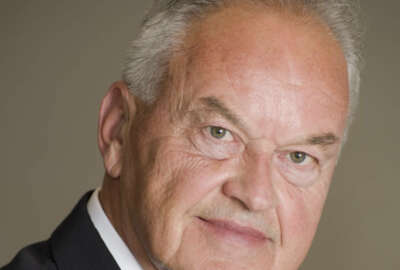
Two milestones in flight(s) for the government
The Defense Department plans to eventually buy nearly 2,000 F-35s. The FAA has registered some 500,000 drones.
Lots of things are in the air for the federal government.
I’m not talking about transition and the next president. I mean, literally in the air. Two big events occurred yesterday, one involving the expensive-and-few F-35 and one involving the many-and-cheap small drones.
If you would like an F-35 fighter, you’d have to be a sovereign government and an ally of the United States. Given permission, you could then buy one from Lockheed Martin for more than all the Rolls Royces in the Saudi sheikdom combined. If you’d like to try your hand at drone aircraft flying, you can pick one up in a blister package at your local 7-Eleven along with your coffee, Powerball ticket and cigarettes. A carton of Camels might cost you more than the drone.
Both the fifth generation fighter and the ubiquitous drone crossed milestones, to use a poor metaphor for flight. As widely reported, the Air Force certified the F-35 for combat operations, even though the plane is still only about three-quarters complete. Depending on which revised schedule you follow, the plane is late by five years or more. More software upgrades are coming soon, and the plane still has years of development before it can accommodate all of the weapons the Air Force hopes to eventually hang from its wings.
People who like the F-35 say it will make a great reconnaissance and surveillance platform because of all the electronic sensors stuffed into it. But at a range of about 1,350 miles, even at subsonic speeds, how can it stay up long enough to be worth supplanting unmanned aircraft, some of which can fly in circles for hours and hours?
Military benefits questions? Chat with DHA Deputy Director, Capt. Edward Simmer Aug. 10 at 11 a.m.
Here’s one way: Make it unmanned and remove all of the heavy apparatus required to support an on-board pilot. Not only unmanned, but programmed-and-autonomous will mean less tending required from ground personnel, or maybe one operator on the ground can monitor a whole squadron of autonomous F-35s. That in turn will cut the really big ticket portion of the F-35 program, namely the cost to operate the planes over their 40-plus year lifespans. But you still won’t be able to buy on at 7-Eleven.
In nearly every published story, the words “F-35 program” are usually preceded by the word “troubled.” Well, every new, important plane ever designed, launched and sold was troubled. Boeing was hours from bankruptcy thanks to the 747. The F-35 is not the best looking plane ever, but it’ll prove itself in the long run.
The Defense Department plans to eventually buy nearly 2,000 F-35s. By contrast, FAA Administrator Michael Huerta reported at the White House that eight months after opening amateur drone registration to the public, the agency had signed up some 500,000 drones. He quipped, the FAA only has 320,000 manned aircraft registered, and that’s more than 100 years after the first powered flight.
More commentary
Huerta marveled at how fast the FAA was able to set up the registration program, and at the speed of its public uptake. But now what? Huerta answered that by saying the FAA would charter two committees — an Unmanned Aircraft Safety Team and a Drone Advisory Committee. The latter will be chaired by Intel CEO Brian Krzanich. I couldn’t find anything related to flight in Krzanich’s background, although — for whatever this is worth — he was shamed by the New York Times into backing off from holding a Donald Trump fundraiser. In Silicon Valley, that’s just not done in polite company.
In many ways, the drone operating industry resembles the regular aircraft industry. You’ve got the military component, the professional commercial operators, and everyone else. The sticking point for the FAA is keeping drones from crashing into property and other aircraft, particularly aircraft occupied by people. So the FAA put the tail before the nose. At least now it can identify the operators of a half million little buzzing drones, presuming people apply the required ID sticker to them.
What worries me, and, I suspect, Huerta, is the nut who drives onto Gravelly Point and starts playing with a 5-pound drone in the flight paths in and out of Reagan National.
Copyright © 2024 Federal News Network. All rights reserved. This website is not intended for users located within the European Economic Area.
Tom Temin is host of the Federal Drive and has been providing insight on federal technology and management issues for more than 30 years.
Follow @tteminWFED





